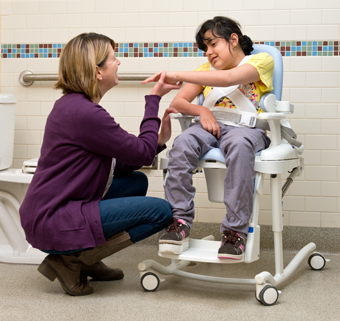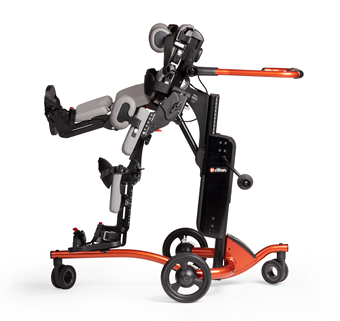Evidence Update: Autism in the News
| February 2012 This evidence update is focused on autism. It is a topic that’s been in the news lately, and the Spring 2012 Pediatric Physical Therapy Journal features two great articles and one commentary on this subject which I summarize below. Additionally, it is timely for the Rifton autism chair which is now available.
This evidence update is focused on autism. It is a topic that’s been in the news lately, and the Spring 2012 Pediatric Physical Therapy Journal features two great articles and one commentary on this subject which I summarize below. Additionally, it is timely for the Rifton autism chair which is now available.
I have also included a remarkable (and provocative) ABC news video at the end which you won’t want to miss. Let me know what you think.
Motor Activity in Children with Autism: A Review of Current Literature (Pediatr Phys Ther 2012;24(1):2-20)
To date, motor limitations have not been considered a “core deficit” in children with autism. However, we are starting to see new attention on this topic and increasing PT intervention. This review summarizes the articles pertaining to motor deficits in children with ASD and how this relates to the practice of physical therapy. Forty-nine articles met the search criteria and covered areas of early motor findings, gestures and motor imitation, postural control and dyspraxia. The findings confirm the presence of motor activity limitations in most children who are later diagnosed with ASD. The authors suggest PTs should be a valuable part of the multidisciplinary treatment team. Much research is still needed to link the deficits of motor skills during early childhood development to inadequate social behaviors later on.
Motor Characteristics of Young Children Referred for Possible Autism Spectrum Disorder (Pediatr Phys Ther 2012;24(1):21-29)
This article uses the Bayley Scales of Infant and Toddler Development, Third edition (BSID-III) to describe the motor characteristics of children with ASD. The BSID-III is accepted by many clinicians as a tool for assessing general development in children between the ages of one and forty-two months. The article deals with thirty children who met the criteria and were referred to a neurodevelopmental clinic for ASD. They were routinely administered the BSID-III by qualified professionals. The authors also ran a Pearson product-moment correlation anlaysis between fine and gross motor developmental ages and adaptive behavior and social-emotional scores. Results showed that these children registered delays of 6-8 months in fine and gross motor skills and those that had confirmed ASD diagnosis later on had a slightly greater delay than the others. This suggests that the BSID-III may not be sensitive enough to identify those children presenting with ASD-like symptoms but without a confirmed diagnosis. Another finding was a trend between delay in gross motor skills and decreased ability to perform functional activities. These delays may indicate adaptive and social-emotional limitations. Although the results of the research are not statistically significant, they provide a better understanding of the motor deficits seen in ASD as well as provide an initial connection between motor abilities and social behavior in this population.
Autism Spectrum Disorder: An Emerging Opportunity for Physical Therapy (Pediatr Phys Ther 2012;24(1):31-37)
This commentary provides a great wrap-up to the above articles on autism. Neuromotor findings in ASD are acknowledged, suggesting that PTs are needed in the intervention phase. However, policy and practice have not fully recognized this. So the authors encourage positive collaboration of PT’s to further research and become greater contributors to the multidisciplinary team in treating children with ASD.
Finally, this may not be “evidence” you are expecting, but it piqued my interest and probably will provide a springboard to future research on this topic. Ballet has incredibly changed this young man’s life. Watch the ABC news video “Overcoming Cerebral Palsy with Ballet” Tell us what you think.




